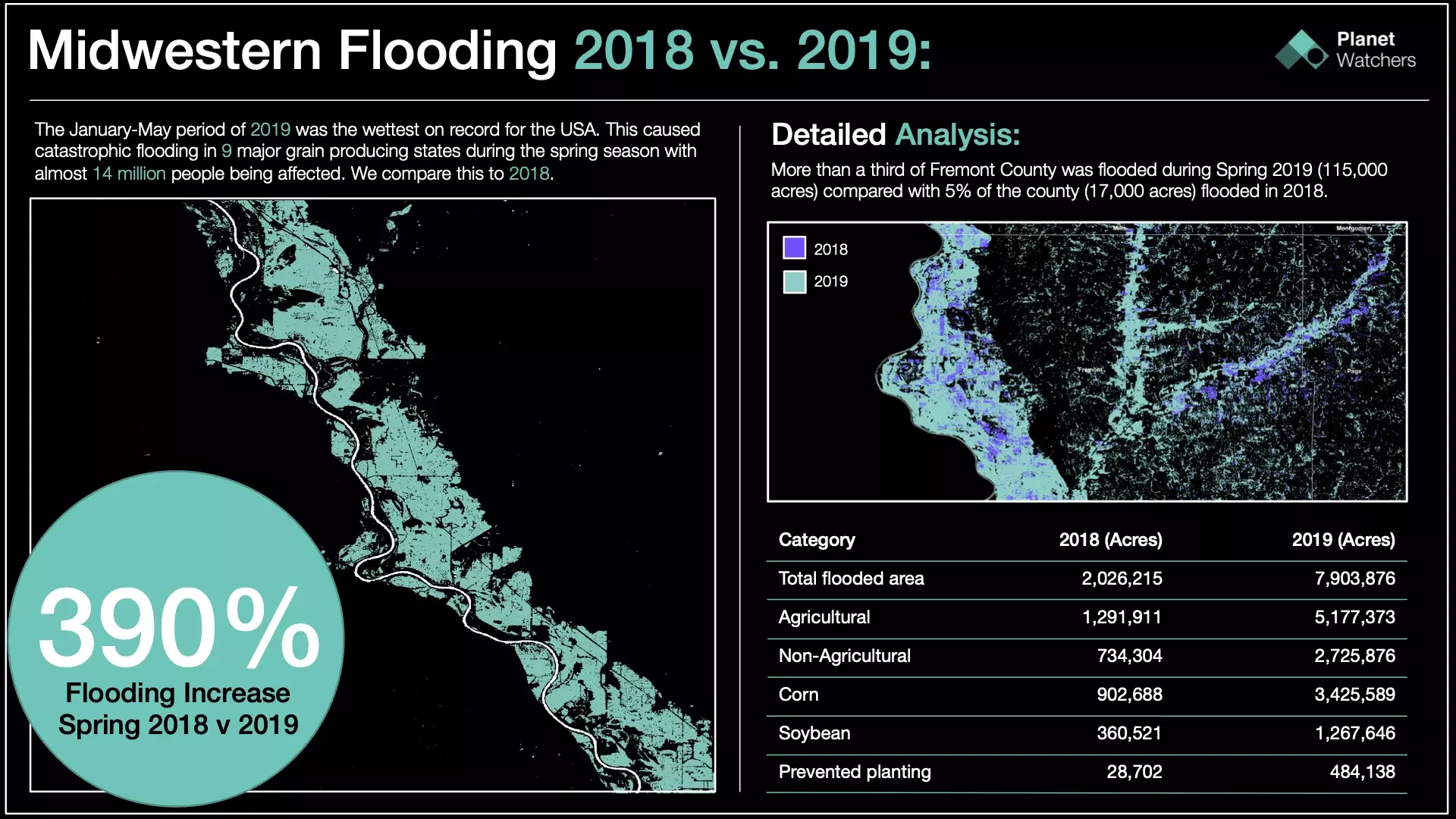Named by The New York Times, ‘The Great Flood of 2019’, the Midwestern United States experienced severe flooding in the spring of 2019. The flooding was primarily along the Missouri River, flowing through the states of Nebraska, Missouri, South Dakota, Iowa, and Kansas.
The period from January through to June 2019 was the wettest on record for the U.S., with multiple severe weather outbreaks.
Nearly 14 million people in the midwestern and southern states were affected by the flooding, and over 1 million acres of U.S. farmland, in nine major grain-producing states flooded.
Due to the excessive rainfall throughout Spring, many fields were still flooded or too moist to plant, causing many farmers to abandon planting. Prevented planting and unsuccessful crop growth due to the soil conditions led to a severe yield shortfall for 2019.
Although it varies by state, early June is the latest corn can be planted, and mid-June is the latest for soybeans. After that, temperatures climb too high, and rain falls too little for the crop to be successful.
In these circumstances, crop insurance adjusters are sent out into the field to assess the severity and extent of the damage. However, this can take substantial time, especially on such a large scale, therefore slowing the claims process.
Using SAR (synthetic aperture radar) to lead the analysis, we were able to automate this process to deliver the full extent of the damage and deliver results in just 1 hour.
In comparison to the 2019 Spring flooding, we reviewed the same area for Spring 2018. The increase in flooding was phenomenal, with an increase of 390%
Within an hour we assessed the total flooded acreage by agricultural and non-agricultural.
We were able to provide an analysis of the crop type by acre and evaluate the acreage of prevented planting which increased by over 1600% in Spring 2018 vs. 2019.
Focusing exclusively on crop insurance in North America, PlanetWatchers tells the story of every field saving our customers time and money by enhancing policy and claims validation.
